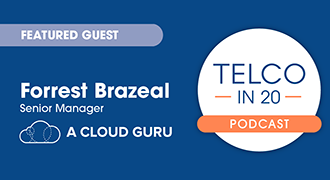I made news in the new year when I said I would bid on the Ericsson subscale assets that the company announced it was looking to decommission. A lot of people reached out and asked questions about it, so I thought I’d spend some time breaking it down.
First, let’s talk about what a subscale asset is. Subscale assets are older, underperforming products that don’t produce enough revenue to warrant the investment needed to make them great again. For example, perhaps a product has too much technical debt and the future revenue possibilities don’t exceed the investment required to get them up to par. Another way an asset would be considered subscale is if supporting and maintaining the product is unprofitable.
It’s a great sign that Ericsson is making the tough, but necessary, decision to deprioritize these assets so it can focus on its core business. As they say, one man’s trash is another person’s treasure, and I think I can make those products profitable. But the deeper reason I want to buy them is because they likely represent all that is core to my mission: telecommunications products that need to be rewritten and refactored for the public cloud. And that’s what the Telco Transformation Fund is all about.
What’s the Telco Transformation Fund?
The telecom industry is going through a transformation driven by public cloud adoption. You know I talk about this all the time. What you may not know is that I’m also spurring it on, in part with the $1 billion Telco Transformation Fund. The fund’s goal is to support the strategic acquisition, development, and cloudification of software products for the telco market.
The industry needs to refactor its legacy software, and by that I mean completely rebuild it for the public cloud. The only way to get all the cost savings, innovation, and agility that the public cloud delivers is by building software with public cloud components—from the ground up.
Traditional vendors are saying they’re going cloud-native, but I’m not so sure. Refactoring a legacy application is really hard. It’s time-consuming. It’s expensive. And it should result in an 80% lower price point. I’m just not seeing the investment, timelines, roadmaps—or cost savings—from the dinosaurs. So, I don’t think they’re doing it right (and in some cases, at all). But public-cloud-native software is the future of telco, which is why my team is committed to doing it well.
I don’t believe in lift-and-shift or in throwing old code into Kubernetes and calling it a day. I talked about the right way to refactor in my recent podcast with Hesham Fahmy of TELUS: simplify, change databases, and remove, reduce, or replace large swaths of legacy source code. No #fakecloud, #fakeSaaS here!
We’re buying
That’s the mission, and we are actively looking for acquisition candidates. We’re focused on makers of enterprise software for telcos and communication service providers (CSPs). Companies may be any size, in any state (old, new, in-between), with any revenue, in any location. Find our acquisition criteria here.
The transition period after an acquisition is no cake walk. Integrations are big transformations that are difficult on many levels. I’ve been through a lot of them in various roles, and I have a plan that helps make them successful, time after time.
- The first step is doing an inventory to determine the state of customers, products, and people.
- Then create your plan. What’s your target profitability level? Given the state of things, this is when the executive team makes decisions about where to invest, what to keep steady-state, and what to deprioritize.
- After that’s done, compare the plan to the current team, make offers for people to stay in their current roles or take on new ones, and in some cases, let some people go.
Acquisition season is OPEN
2023 is going to be an interesting time for the Telco Transformation Fund (and for anyone looking to hire tech talent). Valuations and expectations are falling. Capital is constrained. We are going to see a slower IPO market. Those companies that are already cash constrained, or chasing growth without care for profitability, are going to give themselves a hard look in the mirror. If you’re a telco software company looking for a buyer, PLEASE REMEMBER ME and the Telco Transformation Fund.
The end goal—the final destination—is the public cloud. Our investment strategy is to take diamonds in the rough and refactor them to run natively on AWS. We’re looking for candidates. Know any products looking for a new home? Let me know. Like I said, sometimes one company’s trash is another’s treasure. It doesn’t matter the revenue level, state of cloud movement, or where it’s located. We’re buying. We expect this year will be a highly acquisitive one, and we’re so excited.



 Get my FREE insider newsletter, delivered every two weeks, with curated content to help telco execs across the globe move to the public cloud.
Get my FREE insider newsletter, delivered every two weeks, with curated content to help telco execs across the globe move to the public cloud.




